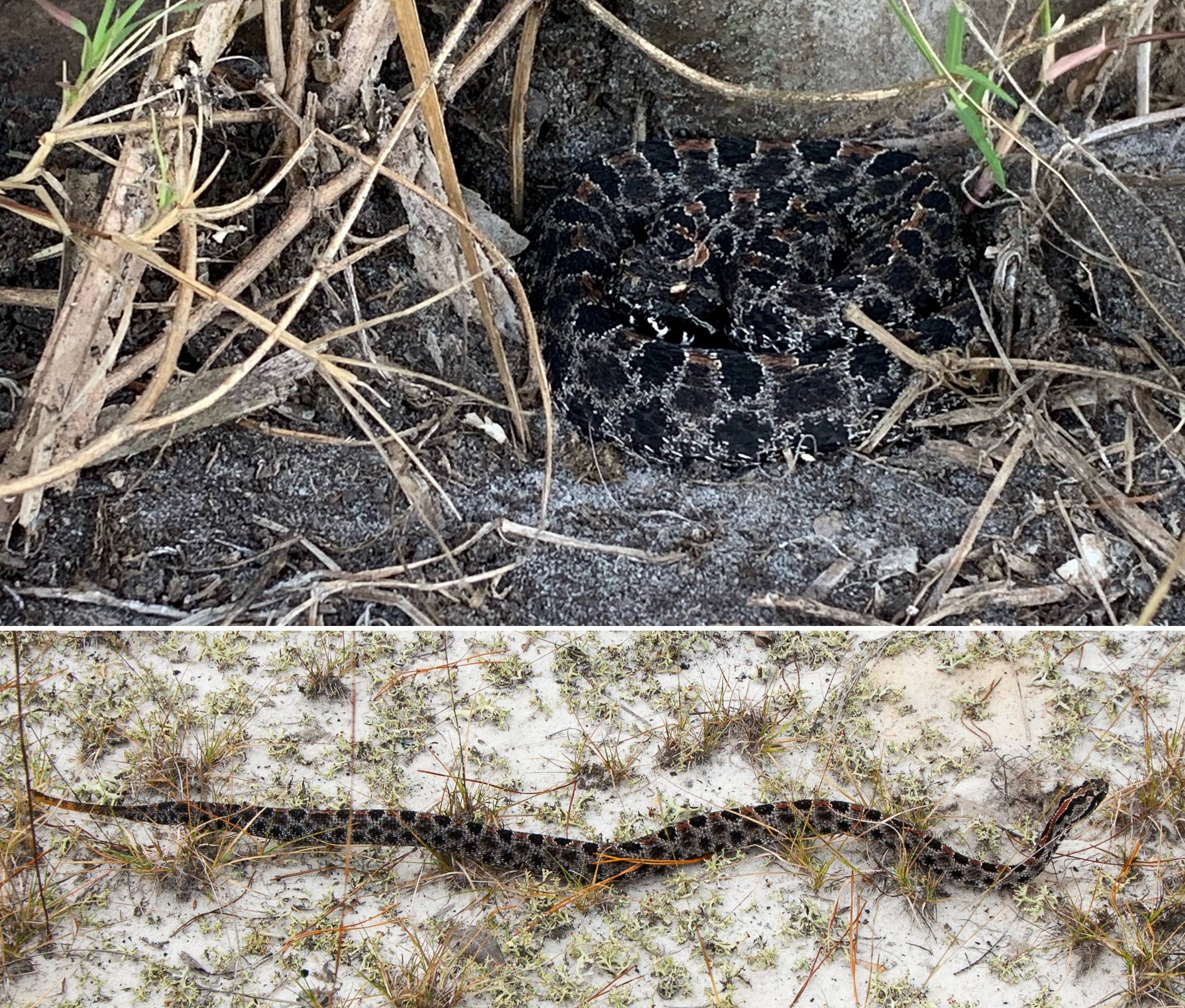A snake only a mother could love
Research video courtesy of Terry Farrell.
Dr. Craig Lind studies the softer side of pygmy rattlesnakes.
At least twice a year, the herpetologist travels from Stockton University in New Jersey to Florida to research the relationship between mother pygmy rattlesnakes and their offspring at three St. Johns River Water Management District properties.
From June through August, the District’s Lake Monroe, Lake George and Heart Island conservation areas are prime locations for studying pregnant pygmy rattlesnakes, says Lind, who has been conducting research on District lands since 2017 with research partner Dr. Terry Farrell of Stetson University in DeLand.
Pit vipers — which include pygmy rattlesnakes (Sistrurus miliarius) — might make most people recoil with dread, but Lind contends that these creatures exhibit social traits and behaviors more commonly associated with mammals, including humans.
“People think of pygmy rattlesnakes as cold-blooded, solitary organisms,” Lind says. “But once you get into the social lives of snakes, it’s interesting to see that pit vipers are one of the only reptiles that exhibit maternal care for their offspring.”
Pygmy rattlers also engage in prolonged courtships, with the male remaining near a reproductive female for extended periods of time (an action known as mate-guarding).
Despite the popular belief that reptiles only lay eggs, like most other pit-vipers pygmy rattlesnakes give birth to live, fully formed juveniles or “pups,” Lind says.
“The juveniles stay close to the mom,” he adds. “Is it for protection or is it because the juveniles’ skin is permeable to water and staying close together helps them retain water? There are a few hypotheses out there.”
Whatever the answer, Lind says he is grateful that the District allows researchers to conduct their work on District lands. The District owns more than 730,000 acres of land as part of its missions to protect water resources, but the ancillary benefits include public access, recreation and the protection of native and endangered plant and animal species.
“Everyone at the District has been responsive and helpful,” he says.
Lind and his fellow researchers study snakes both in the wild and in the lab.
“Sometimes we’re out on the District properties observing them with their offspring using video,” he says. “Other times we bring them back to the lab where they give birth, which allows us to study their maternal care. We then release them back at their point of capture.”
Why the fascination with pygmy rattlesnake sociology?
Note: Pygmy rattlesnakes have been known to bite humans when threatened. The venom injected during pygmy rattlesnakes’ bite is fairly toxic, but because it is delivered in such small amounts, bites are not known to be fatal. No human deaths due to a pygmy rattlesnake’s bite have been reported, but swelling, necrosis, and amputations are potential outcomes of a pygmy rattlesnake envenomation. If bitten, seek medical attention immediately.
“As biologists, we’re interested in behavior and maternal instincts,” he says. “By studying how the snake’s behavior evolves, it can teach us about the social behavior of other organisms and how these behaviors may evolve.”






